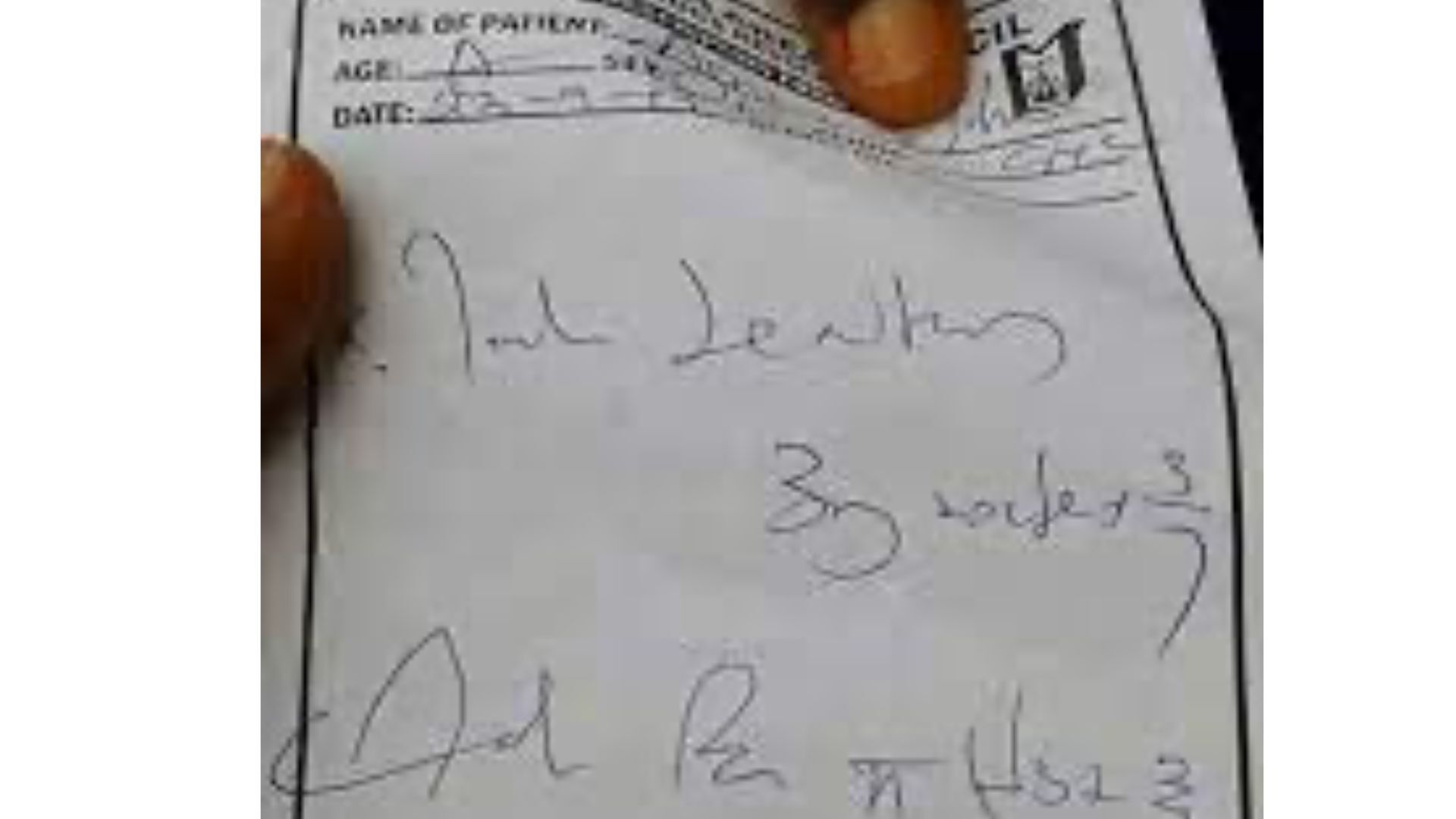Politics
Indian Court Mandates Clear Prescriptions to Save Lives

The Punjab and Haryana High Court has established a pivotal ruling declaring that a “legible medical prescription is a fundamental right.” This decision highlights the critical importance of clear handwriting in medical prescriptions, which can significantly impact patient safety. The ruling, issued by Justice Jasgurpreet Singh Puri, arose during a case involving serious allegations, including rape and forgery. Examining a medico-legal report penned by a government doctor, Justice Puri found it entirely illegible, stating, “It shook the conscience of this court as not even a word or a letter was legible.”
In response to this alarming situation, the court has mandated the government to implement handwriting lessons in medical education and transition to digital prescriptions within the next two years. Until that time, all healthcare providers are required to write prescriptions in clear, capital letters to prevent miscommunication and potential errors.
This ruling brings renewed attention to the long-standing issue of poor handwriting among doctors, a topic often discussed with humor but regarded seriously by medical professionals. Illegible prescriptions can lead to misdiagnoses, incorrect medications, and even fatalities. According to Dr. Dilip Bhanushali, president of the Indian Medical Association (IMA), which represents over 330,000 doctors, the shift toward digital prescriptions is noticeable in urban areas. However, he acknowledges that the problem remains prevalent in rural and small-town clinics. “It’s true that many doctors have poor handwriting, but overcrowded hospitals and heavy workloads make it difficult to write neatly,” he stated. The IMA has urged its members to adhere to the court’s directive and to write in bold, legible letters.
This is not the first time Indian courts have criticized the quality of handwriting in the healthcare sector. Previous rulings from the Odisha High Court and the Allahabad High Court have similarly condemned prescriptions that were described as “zigzag” or “shabby.” The dangers associated with illegible prescriptions are well-documented worldwide. A 1999 report by the Institute of Medicine estimated that medical errors led to at least 44,000 preventable deaths annually in the United States, with 7,000 specifically attributed to poor handwriting. Furthermore, health authorities in the United Kingdom have acknowledged that medication errors have resulted in “appalling levels of harm,” asserting that electronic prescribing could reduce these mistakes by half.
While India lacks comprehensive data on the repercussions of illegible prescriptions, numerous cases illustrate the severity of the issue. Incidents range from patients receiving incorrect medications due to misinterpreted names to tragic outcomes, such as the death of a three-year-old in Noida in 2014 after a wrong injection was administered. In light of such events, pharmacist Chilukuri Paramathama from Telangana filed a public interest petition advocating for a ban on handwritten prescriptions. His campaign successfully prompted the Medical Council of India to issue a directive in 2016, requiring that all doctors write generic drug names “legibly and preferably in capital letters.”
Despite these efforts, pharmacists continue to encounter unreadable prescriptions. Ravindra Khandelwal, CEO of Dhanwantary Pharmacy in Kolkata, reported that, “We sometimes have to call doctors for clarification because it’s critical that we dispense the right medicine.”
As the court pushes for digitization and clarity, this ruling serves as a significant reminder of the potential life-and-death consequences associated with a few illegible words on paper. In an era increasingly defined by technology, the importance of clear handwriting in healthcare remains paramount, underscoring that effective communication can save lives.
-

 World4 months ago
World4 months agoTest Your Knowledge: Take the Herald’s Afternoon Quiz Today
-

 Sports4 months ago
Sports4 months agoPM Faces Backlash from Fans During Netball Trophy Ceremony
-

 Lifestyle4 months ago
Lifestyle4 months agoDunedin Designers Win Top Award at Hokonui Fashion Event
-

 Entertainment5 months ago
Entertainment5 months agoExperience the Excitement of ‘Chief of War’ in Oʻahu
-

 Sports4 months ago
Sports4 months agoLiam Lawson Launches New Era for Racing Bulls with Strong Start
-

 World5 months ago
World5 months agoCoalition Forms to Preserve Māori Wards in Hawke’s Bay
-

 Health4 months ago
Health4 months agoWalking Faster Offers Major Health Benefits for Older Adults
-

 Lifestyle4 months ago
Lifestyle4 months agoDisney Fan Reveals Dress Code Tips for Park Visitors
-

 Politics4 months ago
Politics4 months agoScots Rally with Humor and Music to Protest Trump’s Visit
-

 Top Stories5 months ago
Top Stories5 months agoUK and India Finalize Trade Deal to Boost Economic Ties
-

 Health2 months ago
Health2 months agoRadio Host Jay-Jay Feeney’s Partner Secures Visa to Stay in NZ
-

 World5 months ago
World5 months agoHuntly Begins Water Pipe Flushing to Resolve Brown Water Issue









